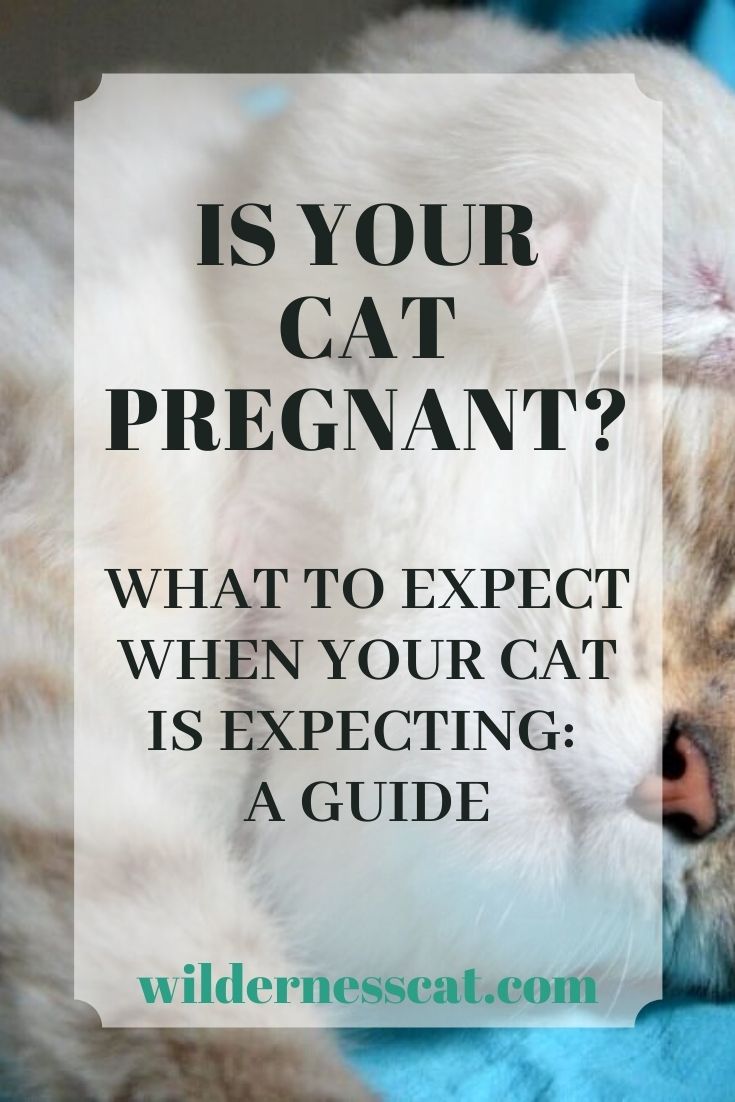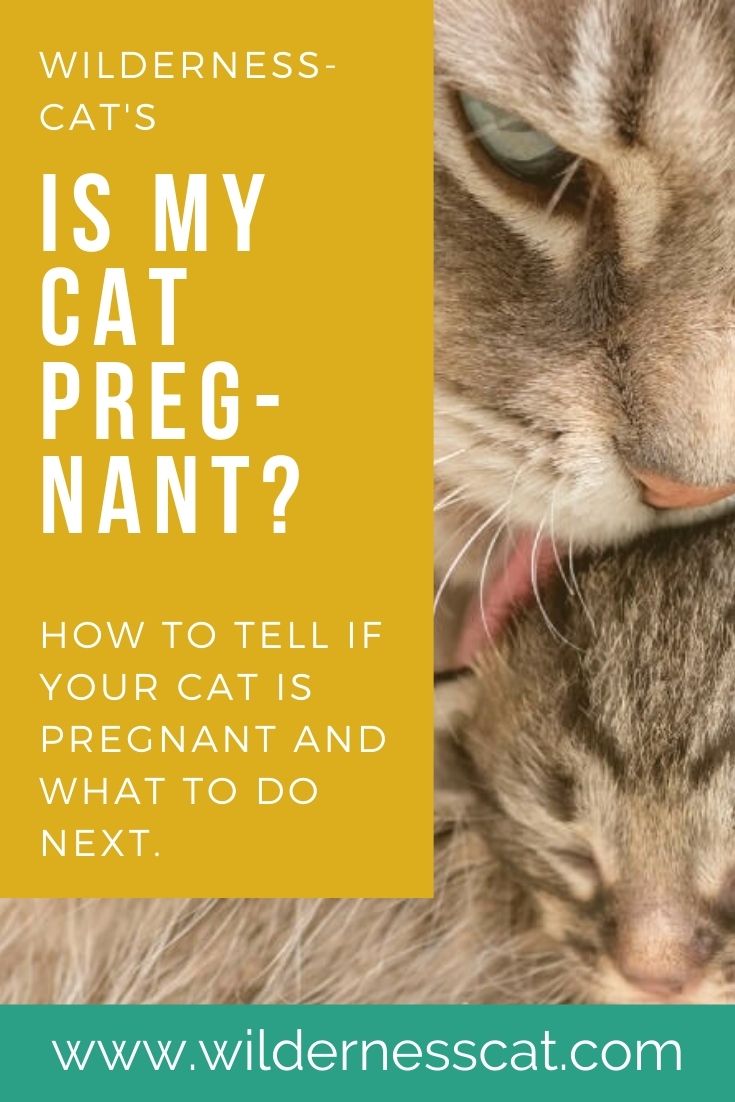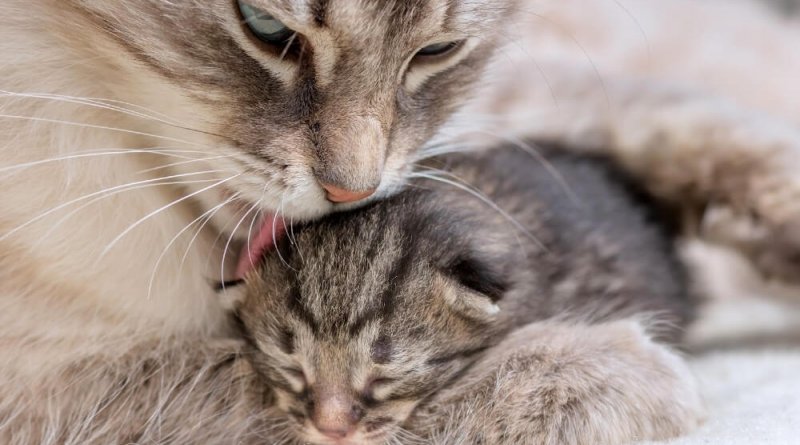Is Your Cat Pregnant? What to Expect When Your Cat Is Expecting
Last Updated on
Guest post from Nicole McCray.
If you’re a mom, you likely read stacks of books while you were pregnant. You had the support of your health care provider, friends, and family to help you get through it all.
But, what do you do when your cat is pregnant? Obviously, she doesn’t want pickles and ice cream… so, what does she need for a safe and healthy pregnancy?
It’s completely natural to feel somewhat overwhelmed at the prospect of your cat having kittens! Here’s how to know if your cat is pregnant and what to expect during her pregnancy and birth.
Disclaimer: This post contains affiliate links. If you make a purchase through these links, we’ll receive a small commission, but it won’t cost you any extra. Thank you!
Quick Navigation
- 1. How to know if your cat is pregnant.
- 2. Caring for your pregnant cat.
- 3. Setting up her queening box.
- 4. How to know when your cat is going into labor.
- 5. What to do while your cat is in labor.
- 6. What to do after the kittens are born.
- 7. Final tips.
How to know if your cat is pregnant.
The doctors at Bond Vet, who provide spay and neutering for cats in New York City, say cats go into heat about every three weeks, so there are numerous chances for them to become pregnant. If your normally slender, non-spayed kitty is starting to look a little round around the middle, she could be pregnant.
Here are some common signs to look for to confirm the diagnosis:
- Unexplained weight gain (she’ll gain around two to four pounds throughout her pregnancy)
- Distended belly at about five weeks
- Pink or swollen nipples at about three weeks
- Vomiting (this symptom is rare, but it can happen)
- Increased appetite
- Changes in personality, such as becoming more affectionate, moody, or reclusive
If you’ve checked off one or more of these symptoms, your cat is not spayed, and she may have been exposed to a male, it’s likely she’s pregnant. Go ahead and make an appointment with the vet to confirm the diagnosis, ensure that all is well, and get an approximate due date.

Caring for your pregnant cat.
The first thing you need to know is that the normal gestation period for a cat is 58-67 days. Now that you’ve confirmed her pregnancy at the vet, be sure to mark her approximate due date on your calendar so that you know when to start watching for signs of labor.
If the cat is a rescue or a stray that you’ve taken in, she may not be current on her vaccines. She could also have parasites such as fleas or worms. Consult with your vet for advice on treatment. In most cases, vaccines can wait, but parasites need to be taken care of right away for the safety of both momma and her kittens.
Be sure to choose a nutritious cat food that contains taurine. Taurine deficiencies can cause problems for momma and lead to birth defects or fatalities in the kittens. It’s also a good idea to supplement her dry kibble with high-quality canned cat food to ensure that she’s getting enough calories, especially during the second half of her pregnancy.
Her litter box should be kept meticulously clean, at least once if not twice per day. She may also need a bigger litter box to accommodate her expanding belly, especially during the last half of her pregnancy.
Setting up her queening box.
The process of a cat giving birth is called “queening.” Your momma cat will be looking for a safe, cozy place to have babies. You should create a queening box for her to make her nest and have her kittens. It should be in a draft-free, warm area of your home. She’ll want lots of privacy, as well.
A cozy box, plastic tote, or crate can all be turned into a queening box. You’ll want to line it with something soft and absorbent, such as an old towel or blanket, or some puppy pads. Whatever you use, choose something you won’t mind throwing away after the kittens are born. It will be bloody and messy, so you’re probably not going to want to try to wash it.
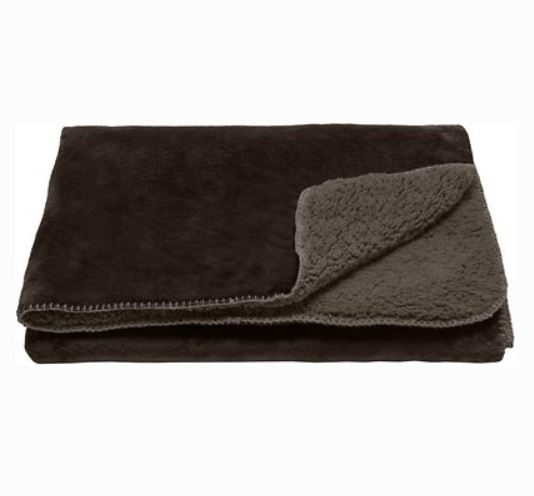
All that being said, cats are known to be independent creatures. Even after you go to all this trouble, she may decide to have her kittens right in the middle of your bed. Be prepared with something like an old sheet or towel to put under her, just in case.
How to know when your cat is going into labor.
A day or two before your cat goes into labor, you may notice that she’s eating less and spending a lot of time in her queening box. When labor starts, she will probably turn around and look at her rear end often. She’ll be restless, turning around and then laying down on her side. Many cats also become very vocal, dig at their bedding, and sometimes even become aggressive.
What to do while your cat is in labor.
It’s natural to think that your cat will want you close by, petting, and comforting her during her labor. But most experts say cats prefer solitude during delivery. It’s best to give her some space. Most cats won’t require any intervention during their labor.
Labor normally lasts two to eight hours but can go as long as 24 to 48 hours if it stalls due to stress. The first few kittens may come every five to 10 minutes, but it can take as long as two hours for the later ones to be delivered.
It’s normal for momma to cry out when she’s pushing, but if she’s shrieking in pain, seek veterinary assistance immediately. If she’s pushing for 20-30 minutes or more without progress, you should also call the vet right away.
Momma will remove the sac from each kitten as it’s born, lick it clean and dry, and help it begin to nurse. Be sure there’s a litter box, food, and water available to her if she wants them. She probably won’t be interested until she’s all done delivering her kittens.
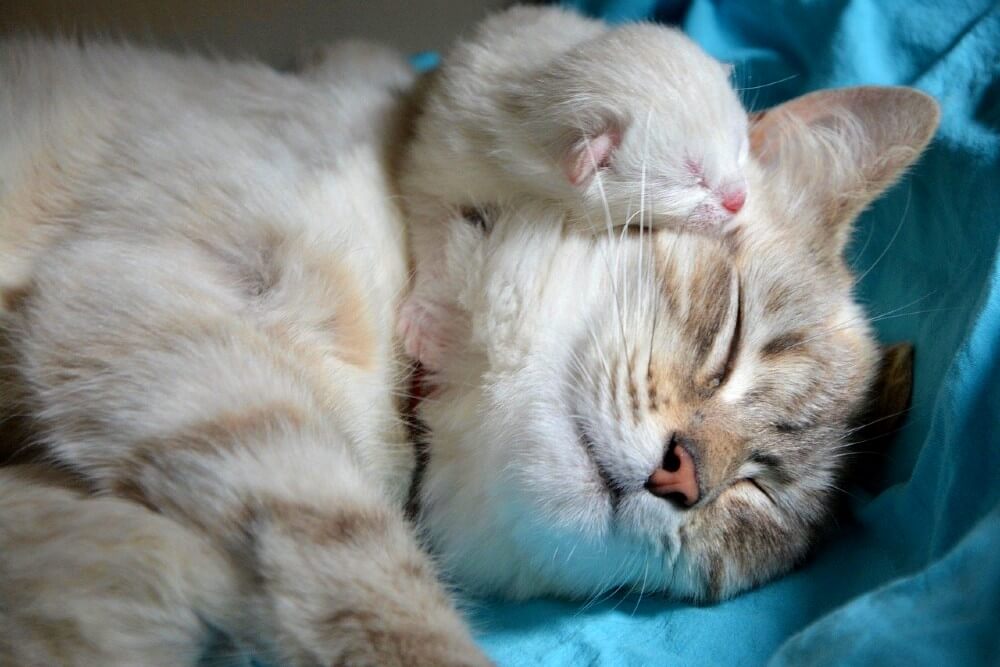
What to do after the kittens are born.
Continue to give momma and babies some space after all the kittens are delivered. Of course, if momma does want attention, give her lots of love. Don’t handle the kittens too much for the first week to 10 days because they are very delicate. Other than ensuring they are warm and dry, they shouldn’t need any intervention unless they don’t seem to be gaining weight.
Shop new kitten essentials on Chewy.com
Final tips.
If your cat’s labor isn’t progressing, a kitten seems to be stuck, she’s bleeding excessively, or showing signs of severe distress, call your vet immediately. Otherwise, just give her some space and be close by if she needs you. Be prepared to fall in love with her adorable little furballs but be sure to have momma spayed as soon as the vet says it’s safe.
About Nicole McCray:
Nicole is a die-hard animal lover who has worked in pet care for years. She is a former vet technician, a dog mom to her two rescue pups, and she grew up living and working at her family’s pet boarding facility. She loves using her writing talents to share the insight she’s learned throughout her career in the hopes that her knowledge can help other pet parents out there!
Did you find this post useful? Pin it for later!
